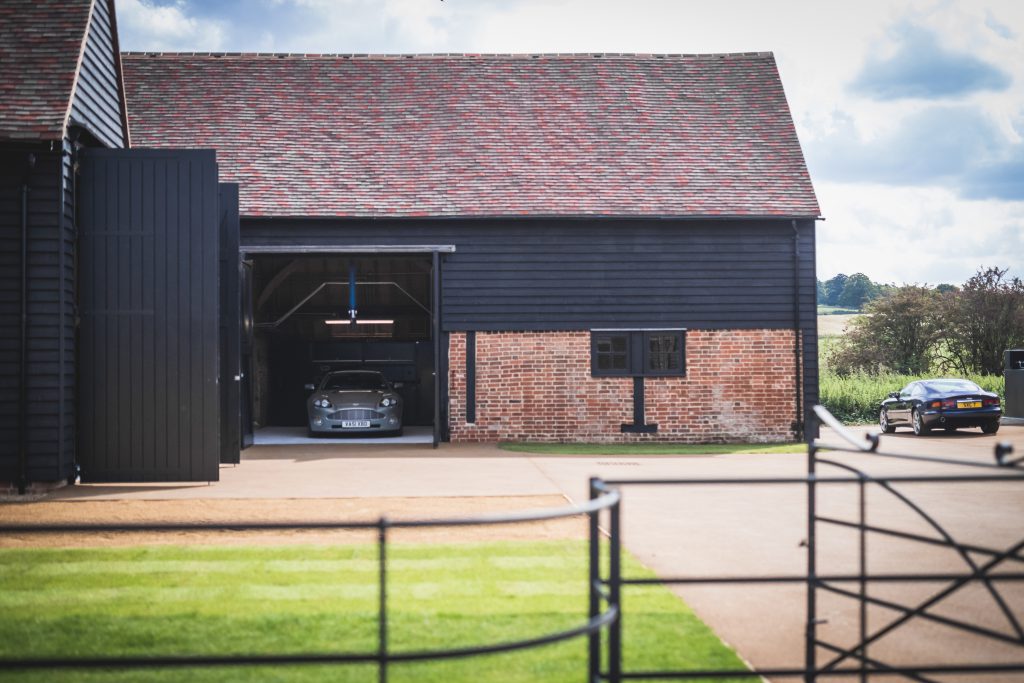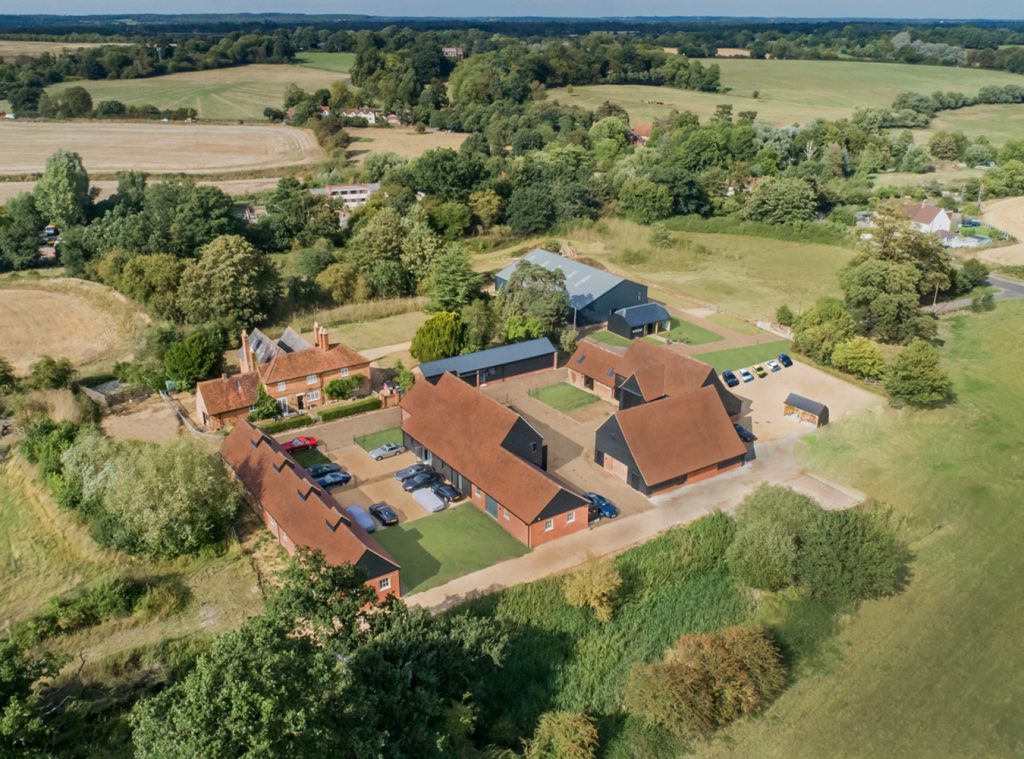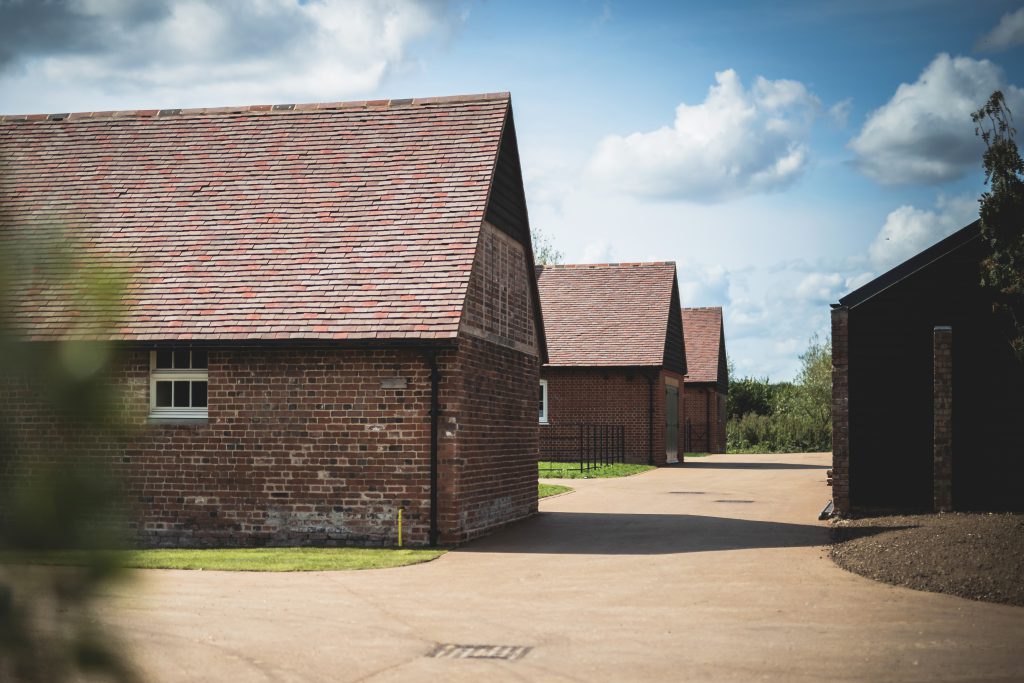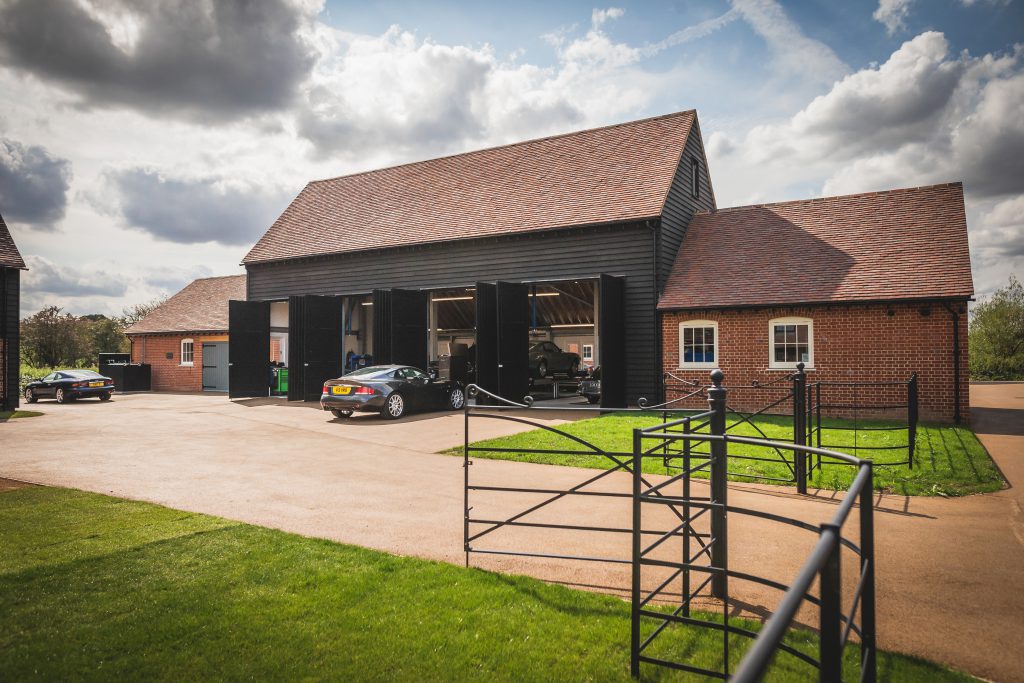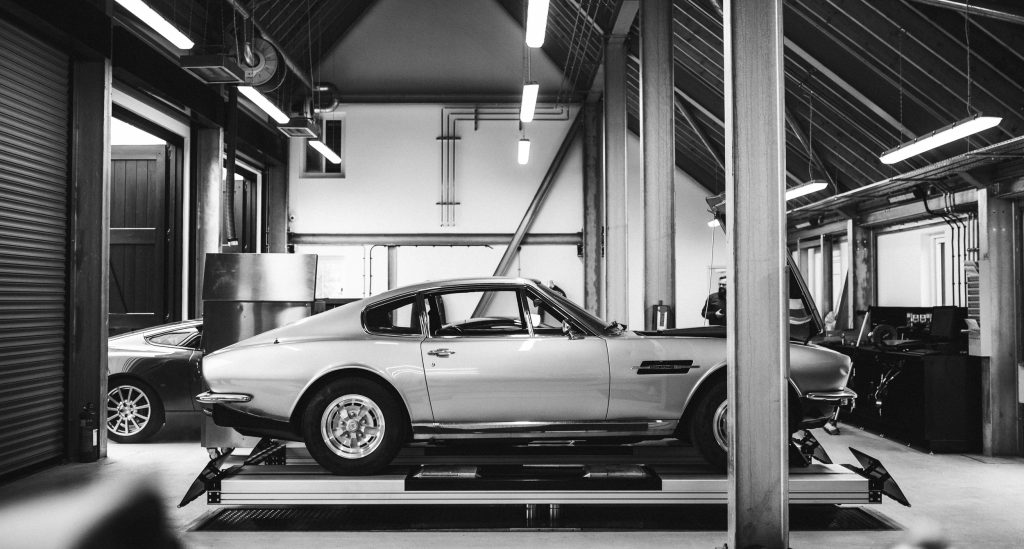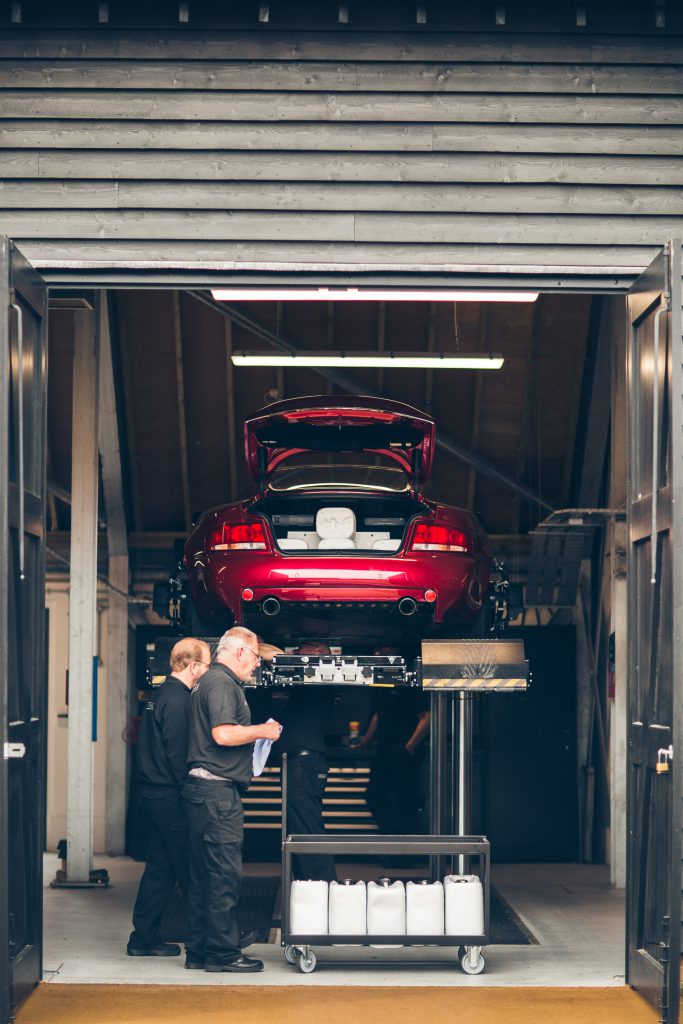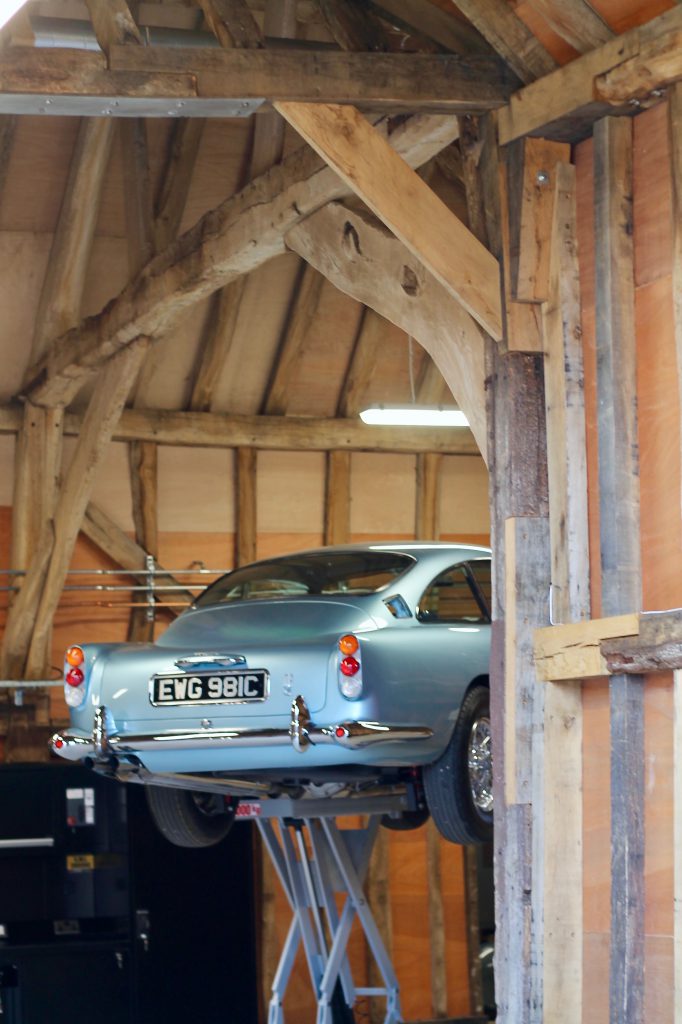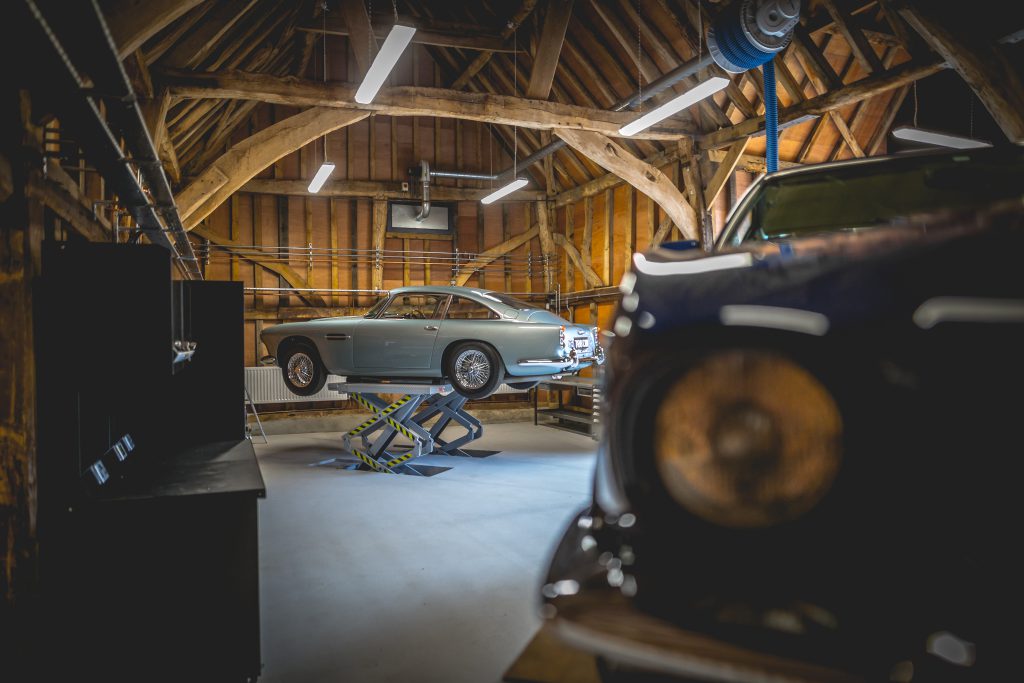Essendonbury Farm
Essendonbury Farm comprises a series of Grade II listed seventeenth and eighteenth century farm buildings on the eastern edge of the Hatfield Park Estate in the Hertfordshire countryside.
Brooks Murray were commissioned to restore the dilapidated barns and bring this unique heritage asset into contemporary use. It now hosts a classic car showroom, workshops and offices, and was recently awarded the 2019 East of England RICS Award in the Commercial Category and the 2019 Herts Building & Construction Award for “Refurbishment Project of the Year”.
At the beginning of 2017, the Farm comprised a listed seventeenth century farmhouse, a listed eighteenth century three-bay oak barn, with projecting porch, and an early nineteenth century four-bay oak and elm barn and several incongruous, ugly and more recently added buildings. Technically in ‘agricultural use’, the barns were amidst the varied stages of decay, since they had been for some time unused as functional agricultural premises.
Working alongside Gascoyne Estates, Synergy and Nicholas Mee & Co, the Brooks Murray team studied historic maps & sought to reinstate the 1896 dual courtyard layout which had been lost throughout the twentieth century to set once again the farmhouse at the head of the courtyard with long views towards Essendon village to the south.
Gascoyne Estates maintain their own set of quality specifications and Building Code for building works within their holdings. Both the specification and code require materials to be of a good quality – handmade bricks and tiles, timber windows and cast-iron rainwater goods – which extend the longevity of the buildings. Such longevity not only makes business sense for the Estate, who retain the buildings in perpetuity, but slowly enhances the quality of the local environment.
Planning and Listed Building Consent was approved for the restoration, conversion and extension of the listed farm buildings that were no longer in agricultural use. By the summer of 2018, these farm buildings were sensitively restored and brought back into use, and the historic 1896 dual courtyard arrangement reinstated through the build of a new ‘traditional’ barn.This is a galvanised steel structure clad in handmade tiles and black painted weatherboarding to fit the historic barn buildings.
As part of the work, the external finishes were removed, timber repairs carried out and the building fabric reinstated to meet twenty-first century standards. The decayed timber frames of the existing listed barns were assessed by a timber specialist, before being carefully repaired using traditional joinery details to meet Historic England standards. This included retaining original fixing elements such as nails and straps. At the same time, brickwork was repaired and repointed using a high quality lime mortar mix.
Changing the use of the barns to workshops, rather than offices, enabled treatments to be more sympathetic – reducing the need to over insulate the walls, allowing barn doors to be left open, retaining an open floor plan arrangement and exposed timber structure.
A principal challenge, however, was finding creative ways to accommodate NM’s specific requirements; this included threading almost 1.2miles of new services through the building fabric to their state-of-the-art workbenches and cabinets, and designing the concrete slabs to accommodate the hydraulic car lifts adjacent to listed brick plinth walls without the need of undermining the foundations. During the works, a historic threshing floor was discovered in the early nineteenth century barn. The floor was then surveyed and preserved beneath the new slab.
The buildings, now in commercial and light industrial use, are the permanent and more sustainable home of classic Aston Martin restorers, engineers and upholsterers – Nicholas Mee & Co. The two acre site now hosts state-of-the-art workshops, including an upholstery workshop, small office space, mechanic bays with hydraulic lifts and a customer reception and showroom. It has brought twenty highly-skilled, factory-trained engineers, upholsterers, other specialists to this part of rural Hertfordshire and new purpose into the decaying barns.
